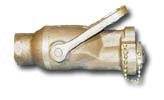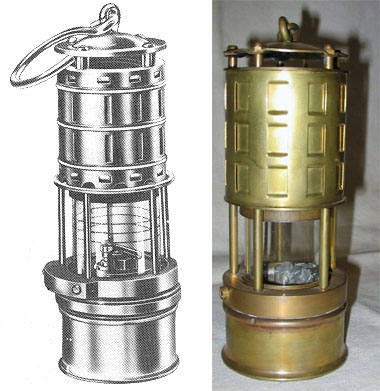| The P-500 (GT), a portable
water pump, was driven by a compact, four-cylinder,
diesel turbine engine of special design. It was intended
primarily to be used for supplying water for fighting
fires, but it could also be used for such shipboard
emergencies as removing water from flooded compartments
and bilges onboard ships. Development on and service
evaluation of the pump was completed in 1956, after the
Korean War. It began to be phased out and replaced by
the P-250 pump in 1965, but several remained in service
through the early 1970s, especially on tenders and
aircraft carriers. The P-500 (GT) weighed about 175
pounds (63 pounds lighter than the P-500) without the
suction hose, strainer and the two diesel tanks. Each
fuel tank contained 7 ½ gallons of diesel and weighed 54
½ pounds. With a fuel consumption rate of 14.9 gallons
per hour, one tank ran the pump for ½ hour. Most
carriers and tenders carried spare 55-gallon drums of
diesel for the pumps on the fantail. The speed of the
engine and the water delivery pressure were controlled
by a special pressure regulator, which could be set
between 75 to 140 psi; it was usually set for 100 psi.
At this pressure and using a 4-inch suction hose, the
pump delivered 500 gallons of water per minute with a
suction lift of 16 feet. Using a 1 ½-inch all purpose
nozzle (APN), with or without a 4- or 10-foot
applicator, it could supply six standard 1 ½-inch hoses.
With an eductor in use at a 50-foot lift, a pressure of
only 75 psi was maintained while the pump supplied three
standard 1 ½-inch hoses with APNs, with or without 4- or
10-foot applicators; the same result occurred while
supplying one 2 ½-inch hose with the APN attached, with
or without a 12-foot applicator. For firefighting class
Bravo fires topside or below decks, one or two 1 ½-inch
hose lines supplied foam using a mechanical foam nozzle
(MFN) with the Navy pick-up unit (NPU). At least
eighteen Sailors were required to transport the pump and
the accessories and to rig the pump for operation when
an eductor was rigged for deep suction. Suitable means
had to be provided to carry the poisonous hot exhaust
gases into the clear, particularly when the pump was
used below decks. A standard 2 ½-inch rubber suction
hose was coupled to the exhaust outlet to remove the
gases. Breathing apparatus were often required for
personnel operating the pump in extended below-deck
operations. Before the pump was placed in operation, it
had to be primed with water. One method of priming was
to use a hand-operated vacuum pump, to draw air from the
pump body, and a 4-inch, hard rubber suction hose,
causing these spaces to be filled with water. This
method would not work on suction lifts over 16 feet. For
higher lifts, bucket priming was used. In this method,
the pump body and suction hose were filled through a cap
opening on the top of the pump housing. To use this
second method, a tight foot-valve on the lower end of
the suction hose was used to prevent escape of the
priming water and to retain prime. |



